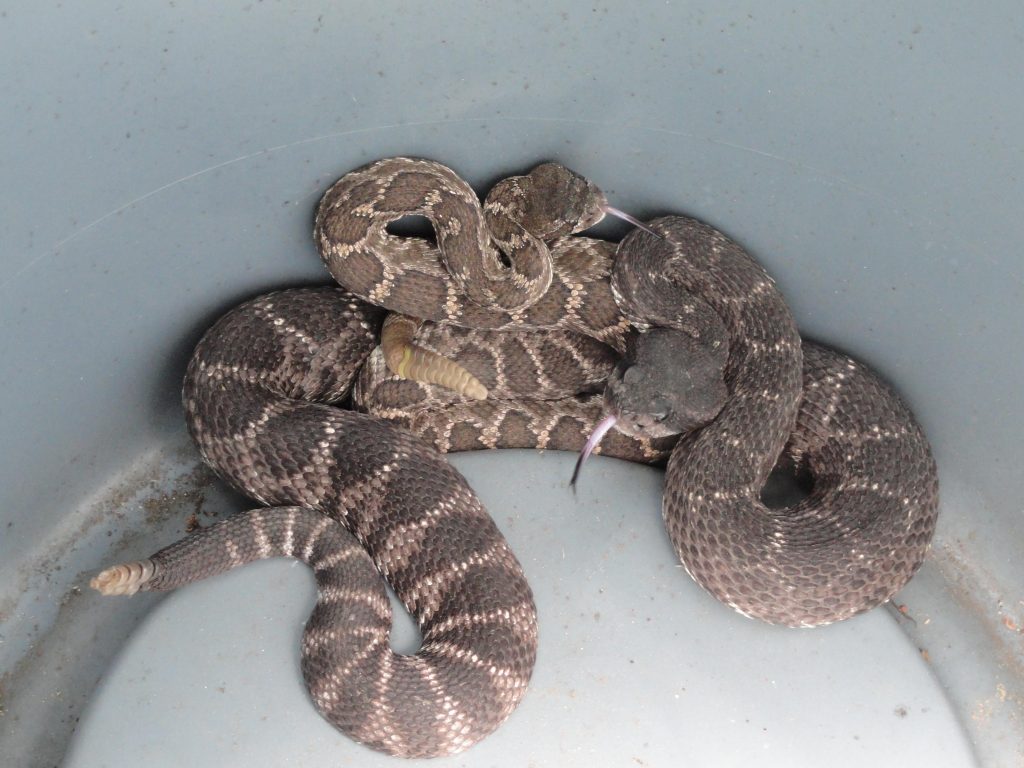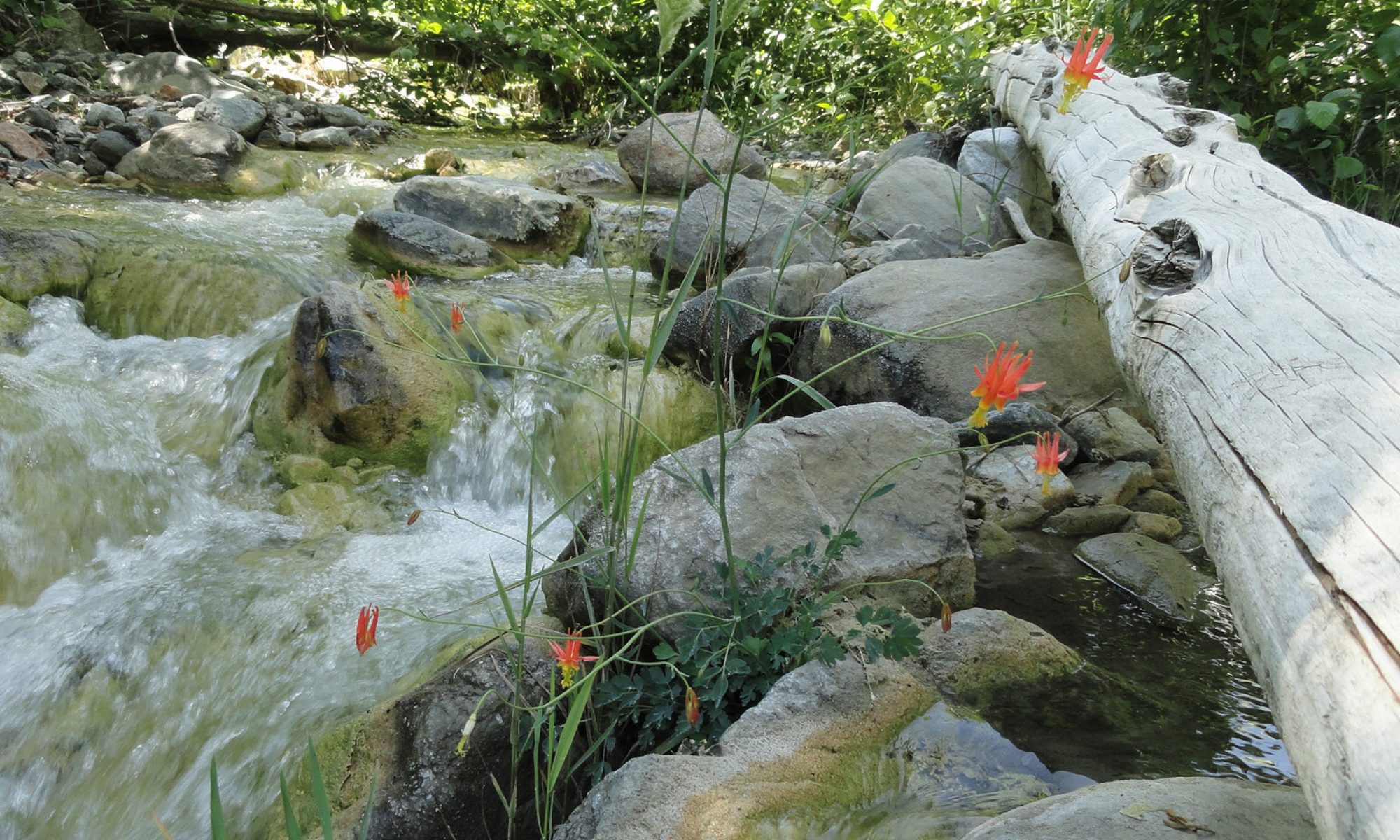
Two Southern Pacific diamondback rattlesnakes await relocation in a Rubbermaid 20 gal. size barrel, just for this purpose.
Always use care when relocating rattlesnakes in Big Santa Anita Canyon. Everything’s blooming right now in the front country of the Angeles National Forest. Hikers make their way up the Gabrielino Trail to the cool, moist beauty of Sturtevant Falls. Colors are vibrant, sweet floral scents waft in the canyon breezes and the streams are as full as they’ll be until next winter’s rains. This last weekend my wife and I were at our little cabin in the Big Santa Anita with all the windows open and the sound of bird song carrying throughout. While raking, Joanie noticed the tail of a mature rattlesnake sliding underneath the low shutter of an enclosure attached to our toolshed. I grabbed my snake stick (garden hoe minus the blade) and relocation barrel (20 gal. Rubbermaid trash can) for the task at hand.
Very carefully, I lifted the shutter to find a very healthy and cautious rattler looking back at me from the shadows. Its’ neck and head were lifted in the manner of a cobra. While prodding the snake with the stick, I mentioned to Joanie the possibility of two being present. Up at Sturtevant Camp, we had once caught two snakes within a short distance of one another on a warm summer day. One large female was in my wife’s flower garden and the other near the Ranger Cabin.
Sure enough, there was another snake! This rattler was more slender and challenging to capture. The larger one was easy to catch. You just have to get her to drape across the metal hook at the end of the wooden handle. Once that’s accomplished, just lift the serpent up and over the wall of the barrel, making sure to gently set down. Next, we added the smaller partner. The two immediately began to snap at one another! Very unlike the behavior of the earlier Sturtevant pairing. The larger, darker and stouter partner would occasionally utter a low and irritated “hiss……” at the other. Suddenly their bodies would slap up hard against each other. Certainly, it was time to release them to the unconfined wilds of the Big Santa Anita Canyon’s East Fork, away from all human habitat.
The snakes continued to rattle inside the barrel which was held snugly up to my back as we hiked up the quiet side canyon. The rattling sounds a bit like a snare drum that never stops. When we reached the spot of disembarking, it was just a matter of carefully removing the lid and turning the barrel on its’ side as sliding snakes made their way down the wall to the earth. Both snakes were worn out and just lay side by side very peacefully. We watched down as warm spring light spilled down on both these fascinating and terribly misunderstood creatures. The larger snake had a crimson dot, perhaps from a nip, on her snout.
So, keep your eyes and ears open for rattlesnakes, especially as the temps rise and the days lengthen. Rattlesnakes, like all snakes, are solitary and reclusive creatures. If you should happen upon one while out on a hike, just give it distance and a way out. Let it live in peaceful solitude. They belong, too, in this vast and varied universe of life.
